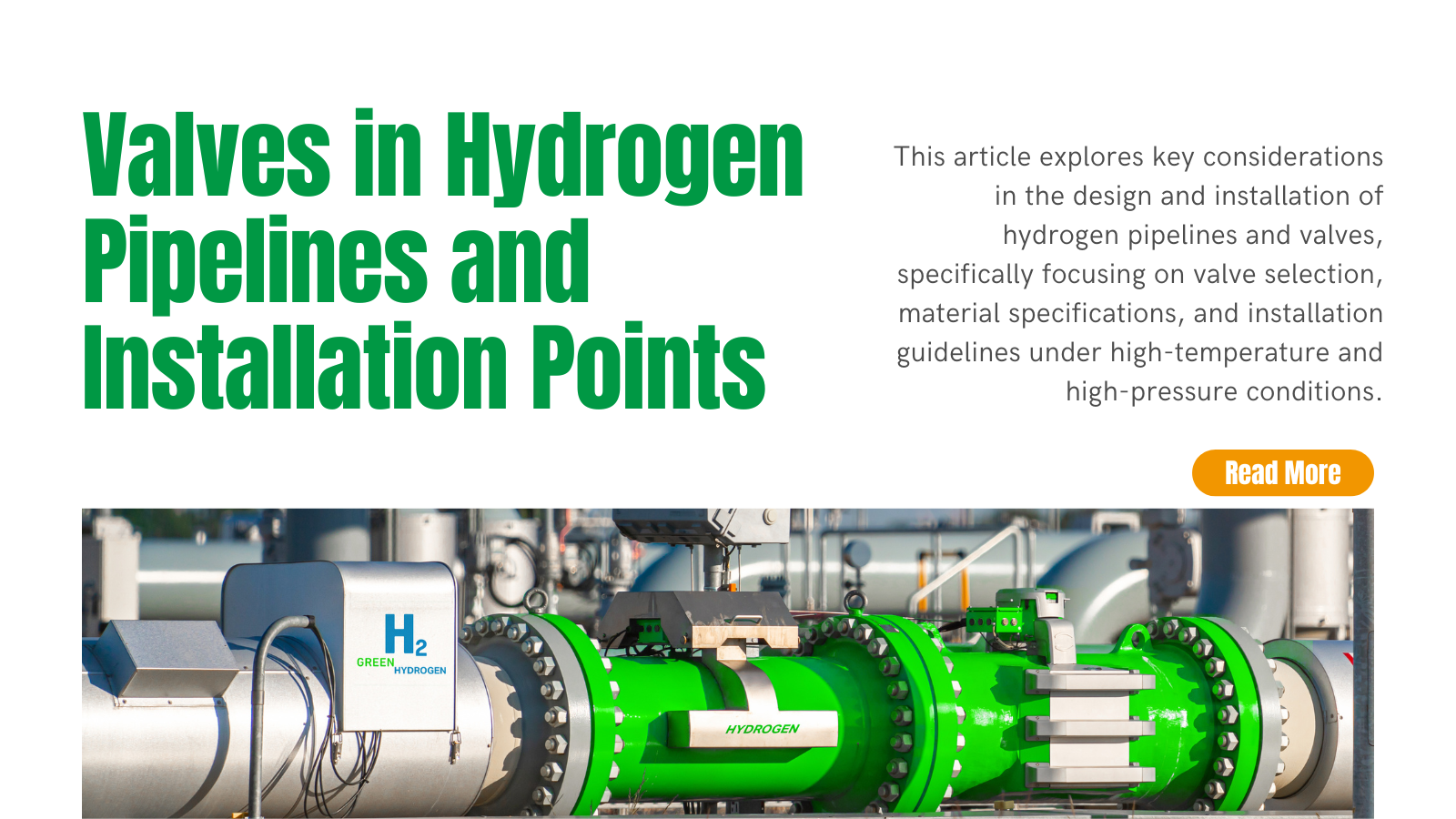Requirements for Hydrogen Pipelines and Valves (Part 3) - Valves in Hydrogen Pipelines and Installation Points

In the realm of advancing energy technologies, hydrogen has emerged as a pivotal player for clean and efficient energy solutions. This article explores key considerations in the design and installation of hydrogen pipelines and valves, specifically focusing on valve selection, material specifications, and installation guidelines under high-temperature and high-pressure conditions. The objective is to offer practical insights for the sustainable development of hydrogen energy technology.
Valve Selection
In alignment with the international standard ISO 19880-1, the recommended valves for hydrogen gas pipelines are ball valves or globe valves. This standard ensures a globally recognized and standardized approach to valve selection, emphasizing reliability and safety in hydrogen transport systems.
As we delve into the intricacies of hydrogen infrastructure, adherence to ISO 19880-1 not only guarantees conformity with international benchmarks but also underscores our commitment to fostering a secure and standardized hydrogen energy landscape.
Material Specifications for Valves
- When the sealing surface is directly connected to the valve body, the sealing surface material can be the same as the valve body.
- The sealing filler for valves should be graphite-treated asbestos or polytetrafluoroethylene (PTFE).
Material Requirements under High-Temperature, High-Pressure Conditions
In environments of high temperature and pressure, the predominant materials for pipelines and valves include austenitic stainless steel, such as low-carbon stainless steel, and low-alloy steels (Mo steel, Cr-Mo steel). Discussion on low-alloy steel in hydrogen-rich environments at high temperatures includes considerations of hydrogen diffusion, surface and internal decarburization, and the formation of micro-cracks.
- Surface Decarburization: Surface decarburization, which does not lead to cracks, results in a slight decrease in strength and hardness but an increase in ductility. The stable formation of carbides directly affects the speed of surface decarburization.
- Internal Decarburization and Micro-Cracks: Internal decarburization and micro-cracks occur as hydrogen infiltrates steel, reacting to generate other gases, such as methane. The accumulated gases often gather at grain boundaries, creating high local stresses that ultimately lead to micro-cracks, fissures, or bubbles.
- Factors Influencing High-Temperature Hydrogen Corrosion: These factors include the incubation period of steel, the impact of primary and secondary stresses, the role of heat treatment, and the influence of composite and overlay layers.
- Incubation Period of Steel: Before hydrogen damage manifests, there is a period during which conventional mechanical tests do not reveal significant changes in mechanical properties. The length of this incubation period is crucial in determining the effective lifespan of steel under conditions of high-temperature hydrogen ingress.
- Stages of High-Temperature Hydrogen Corrosion: a. Incubation Period: During this phase, mechanical properties change very slowly. b. Rapid Deterioration: Mechanical properties degrade rapidly, accompanied by the swift growth of micro-cracks. c. Final Stage: Depletion of carbon in the solid solution, reaching the ultimate mechanical properties.
Installation Considerations for Pipelines and Valves
- Thoroughly remove burrs, welding slag, rust, and dirt from surfaces exposed to hydrogen.
- Use argon arc welding for carbon steel pipes and stainless steel for bottom welding.
- Employ welding or other effective leak-prevention methods for hydrogen pipeline connections. Avoid thread-sealed connections between pipes, and use sealing pads for connections made of stainless steel, non-ferrous metals, PTFE, or fluororubber. Do not use raw tape or other insulating materials as sealing means.
- During and after installation, stringent measures should be taken to prevent welding slag, rust, and combustible materials from entering or remaining in pipes.
- After passing the strength test of hydrogen pipelines, use oil-free air or inert gas at a flow rate of no less than 20 m/s for purging until the outlet is free from rust, dust, and other impurities.
Conclusion:
In conclusion, the intricate dance of materials, environmental conditions, and meticulous safety measures orchestrates the successful installation and operation of hydrogen pipelines and valves. As we navigate the complexities outlined above, it's imperative to underscore the ongoing commitment to safety and innovation in this realm. The exhaustive considerations and experiences shared pave the way for a future where hydrogen technology stands as a beacon of efficiency, safety, and sustainability.
